McMaster University NURSING 102 Pass NCLEX 97 Page Guide
Document Content and Description Below
Realize that you must answer all questions in relation to what’s safe for the patient Realize that preventing the spread of disease is top priority CADIOVASCULAR Realize the following in regards ... to a plasma cholesterol screening (measures the amount of cholesterol that one has): Realize that only sips of water are permitted for 12 hours before plasma cholesterol screening to achieve accurate results Realize that after the application of a cast on the arm, the arm should be elevated to minimize swelling; it should be elevated for the first 24 – 48 hours; it should be protected from pressure and flattening of the cast Realize that a Tredelenburg test is used with a client who may have varicose veins Realize that a heartburn that radiates to the jaw indicates chest pain Realize that when a patient is receiving thrombolytic therapy, IM injections may cause bleeding. Realize that roasted chicken have low cholesterol Realize that if the pulse increases, it indicates that the tissues are not being perfuse correctly Realize that the normal RBC in males is 4.3 – 5.9 million/mm3; females 3.5 – 5.5 million Realize that a low platelet count will give problems with no blood clotting, allowing blood to infuse joints, putting client at risk for injury Realize that the most common cause of mitral valve problems is a history of rheumatic fever with a subsequent complication of carditis, which affects the valve Realize that the BP should always be taken on the opposite arm from the graft Realize that a normal range for CVP is 3 – 12 cm water pressure; a reading of 8 cm indicates a desired response to fluid replacement, avoiding a hypovolemic state Realize that a CVP readings measures the pressure in the right atrium Realize that a Swan-Ganz catheter measures the pulmonary artery wedge pressure, which is an indirect reading of the pressure in the left ventricle Realize that a pulmonary artery catheter is a multi-lumen apparatus that allows for the following measurements: o Pulmonary artery pressures o Myocardial filling pressures o Cardiac output o Pulmonary resistance o Systemic resistance o Cardiac index – the cardiac output divided by the body surface area Realize that a nitroglycerine patch should be removed before an MRI test Realize that Buerger’s disease (thromboangiitis obliterans) is a vascular occlusive disease of the extremities causing a decreased blood flow to the feet and legs Nurse must check for ulcers formation and gangrene Results in thrombus Seen in men 20 – 35 year old Smoking is a causative factor Pain at rest and coldness is a major system Pain control is a goal of treatment Fluids are not restricted Goal of medical management is to prevent progression of disease 3 Realize that the keep-open rate is the lowest possible infusion rate; this rate should not be allowed for a patient with sickle cell, as they need more hydration Realize that a child with sickle cell should not be given aspirin because of bleeding tendencies Realize that the keep-vein-open (KVO) rate is (20 mL/h); this rate will keep access open Realize that you just keep sickle cell clients away from people with infections Realize that postoperative open heart clients should be encourage to be out of bed and ambulating as soon as possible, frequently one or two days after surgery Realize that elderly patient usually have lower temperature due to a lower basic metabolic rate Realize that an elderly client is usually intolerant to cold Realize that recognition of adult hypertension should be done after two readings taken at least five minutes apart Realize the following about a sequential compression device (SCD) Apply antiembolism stocking prior to applying the sequential compression device sleeves o Realize that stocking should be worn the entire time that client is in the hospital; it should be removed before baths and replaced after the skin is dry and before the client gets out of bed (non-ambulatory) o Realize that stocking is worn to prevent discomfort and to increase blood flow Realize that you need to be able to fit two fingers between the sleeve and the leg Realize that the SCD is used to decrease venous stasis and reduce the risk of thrombus formation Realize that if a patient has obese leg and thighs, it is not good to put elastic stocking on because it may decrease venous return because of constriction around the thigh and legs Realize that talcum powder is a toilet powder composed of perfumed; if a nurse applies it to a client’s feet, it allow easier applications of the stocking Realize that elevating the client legs before applying the stocking prevent stagnation of blood in the lower extremities Realize that when you apply the stocking, make sure that there are not wrinkles because they can cause irritation to the skin Realize the following about DVT: Realize that a patient with DVT should not be ambulating; patient should be on bedrest for 5 – 7 days to prevent pulmonary embolisms and legs should be elevated with warm moist packs Realize that the affected calf is expected to be warm Realize that extremity edema is expected because of venous congestion Realize that client needs to be given anticoagulants Realize the following about IV sites: Realize that if tenderness and redness at the IV insertion site is noted, the IV catheter should be removed to prevent further damage to the vein; and warm soaks should be applied to decrease inflammation, swelling and discomfort o Realize that reddened area with red streaks is indicative of phlebitis Realize that IV that are infiltrated should be discontinued and restarted at a new site; elevating the extremity may increase the rate of reabsorption of the fluid Realize that unused solution are always discarded; site of catheter changed every 4 weeks, change IV tubing and filers every 24 hours Realize that a marking pen should not be used on an IV bag; ink can penetrate the plastic and get into the solution; labeling should be done on the bag label using a regular pen Realize that hypertonic dextrose solution similar to TPN is used to wean patient off TPN Realize that extravasation is when a vesicant has filtrated; realize that a vesicant is a medication or IV solution that causes blisters and tissue sloughing (burning) o Realize that the following are medications that can cause a burn if infiltrated: gentatmicin, penicillin, vancomycin, dilantin, any antineoplastic, calcium, potassium and epinephrine o Realize that all infiltrations needs cool compresses except for vancomycin, which needs warm compresses Realize that if a hematoma occurs, cool compresses are needed. Realize that whenever bleeding is suspected, cool compresses is best to constrict vessels to slow down or stop the bleeding 4 Realize that if IV line is clotted, it is best to just pull it and not use it; sometimes you can just dissolve the clot but this is not always recommended Realize that with a CVP, after administration of medication, flush with saline and then a heparinized solution afterwards; flush every 12 hours or after medication administration Realize that it is smart to limit manipulation of the cannula at the IV insertion site to prevent dislodgement Realize that IV sites should not be close to joints because movements could cause displacement [Show More]
Last updated: 1 year ago
Preview 1 out of 97 pages
Instant download
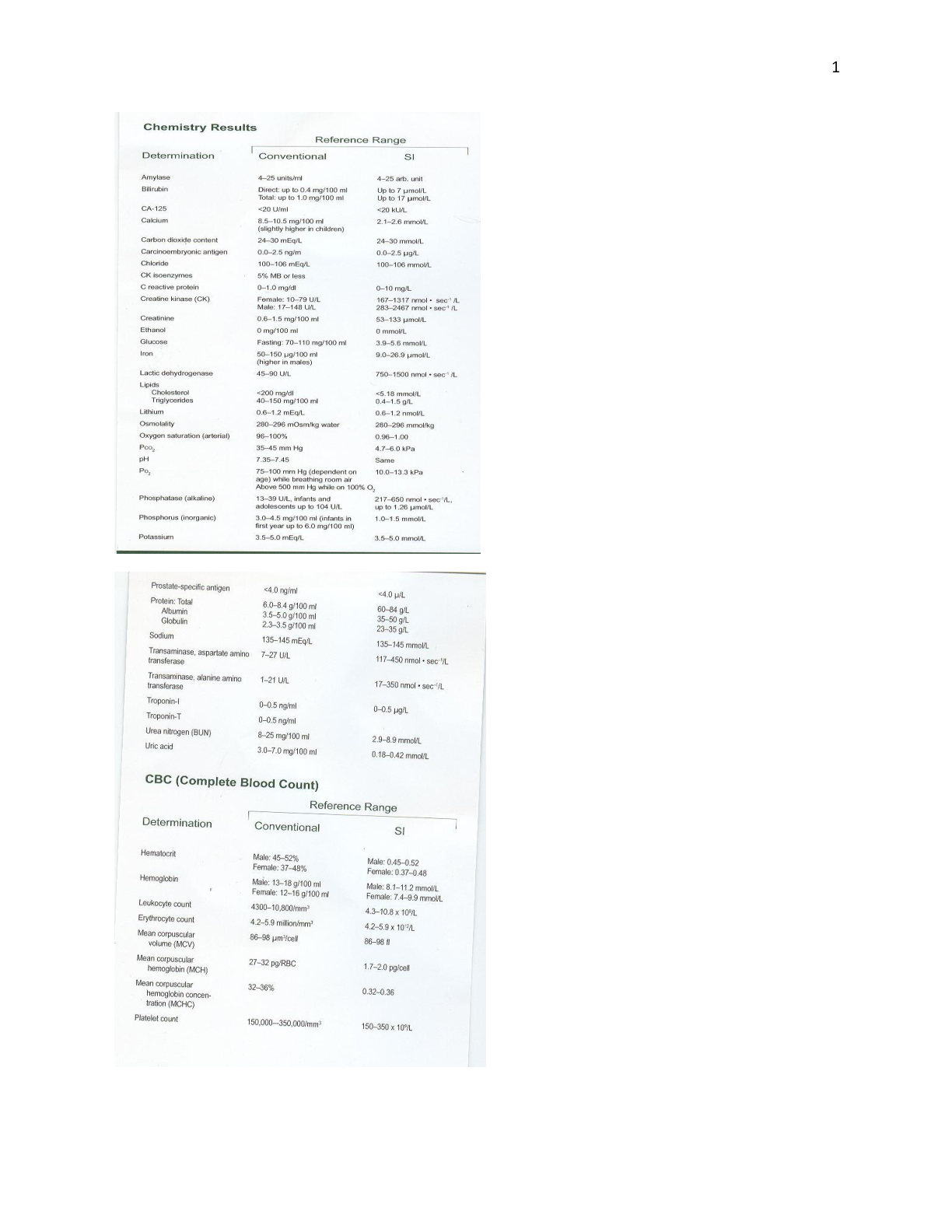
Buy this document to get the full access instantly
Instant Download Access after purchase
Add to cartInstant download
Reviews( 0 )
Document information
Connected school, study & course
About the document
Uploaded On
Oct 15, 2021
Number of pages
97
Written in
Additional information
This document has been written for:
Uploaded
Oct 15, 2021
Downloads
0
Views
98

.png)
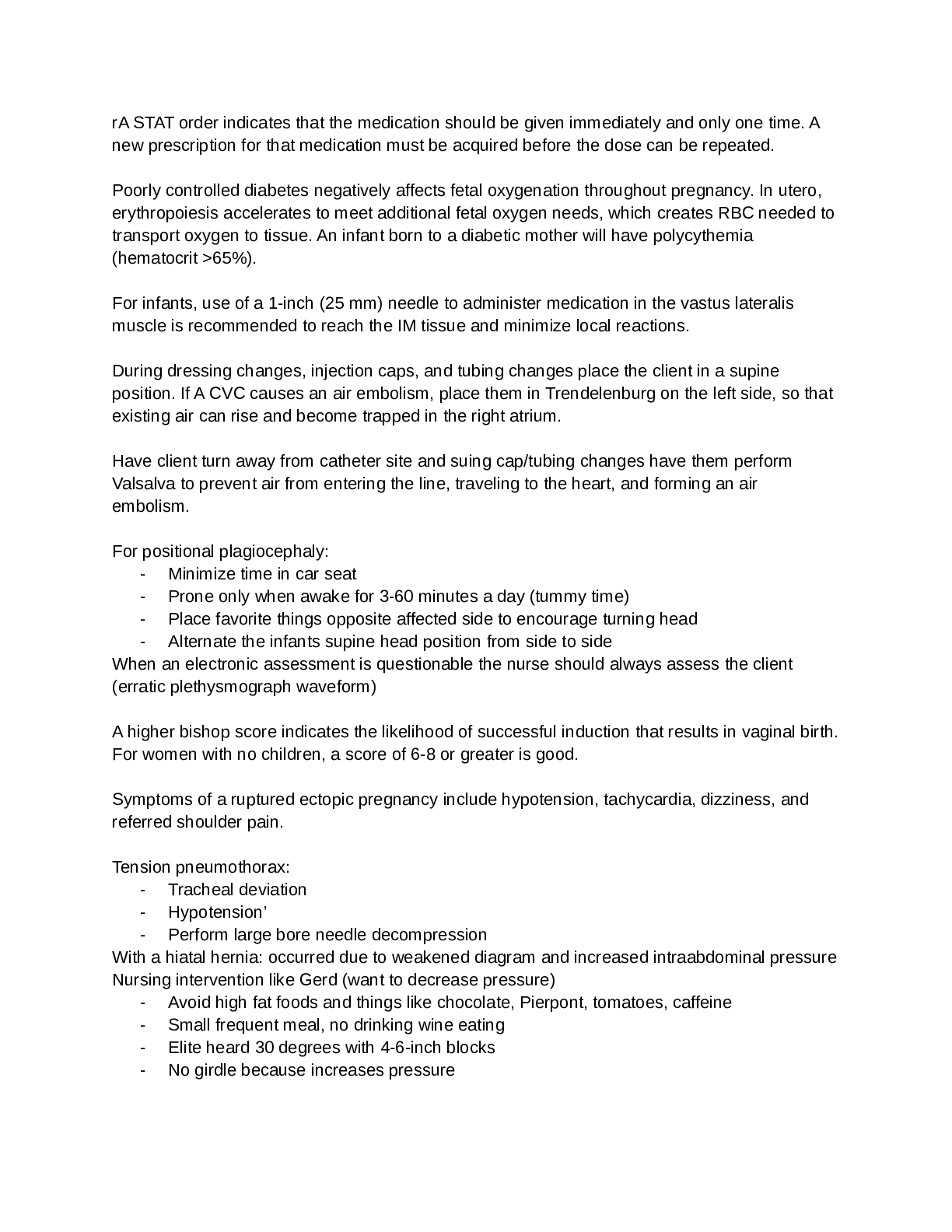
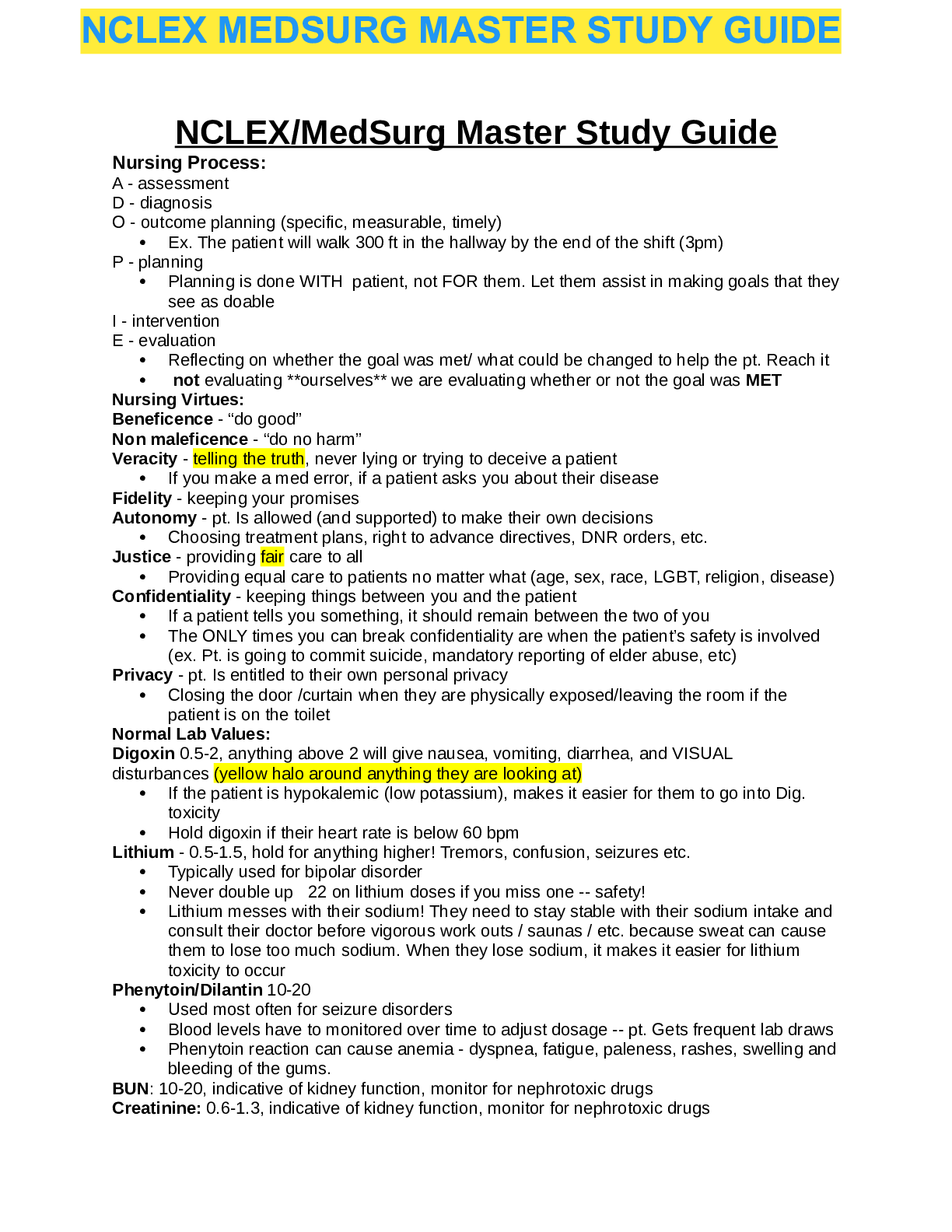
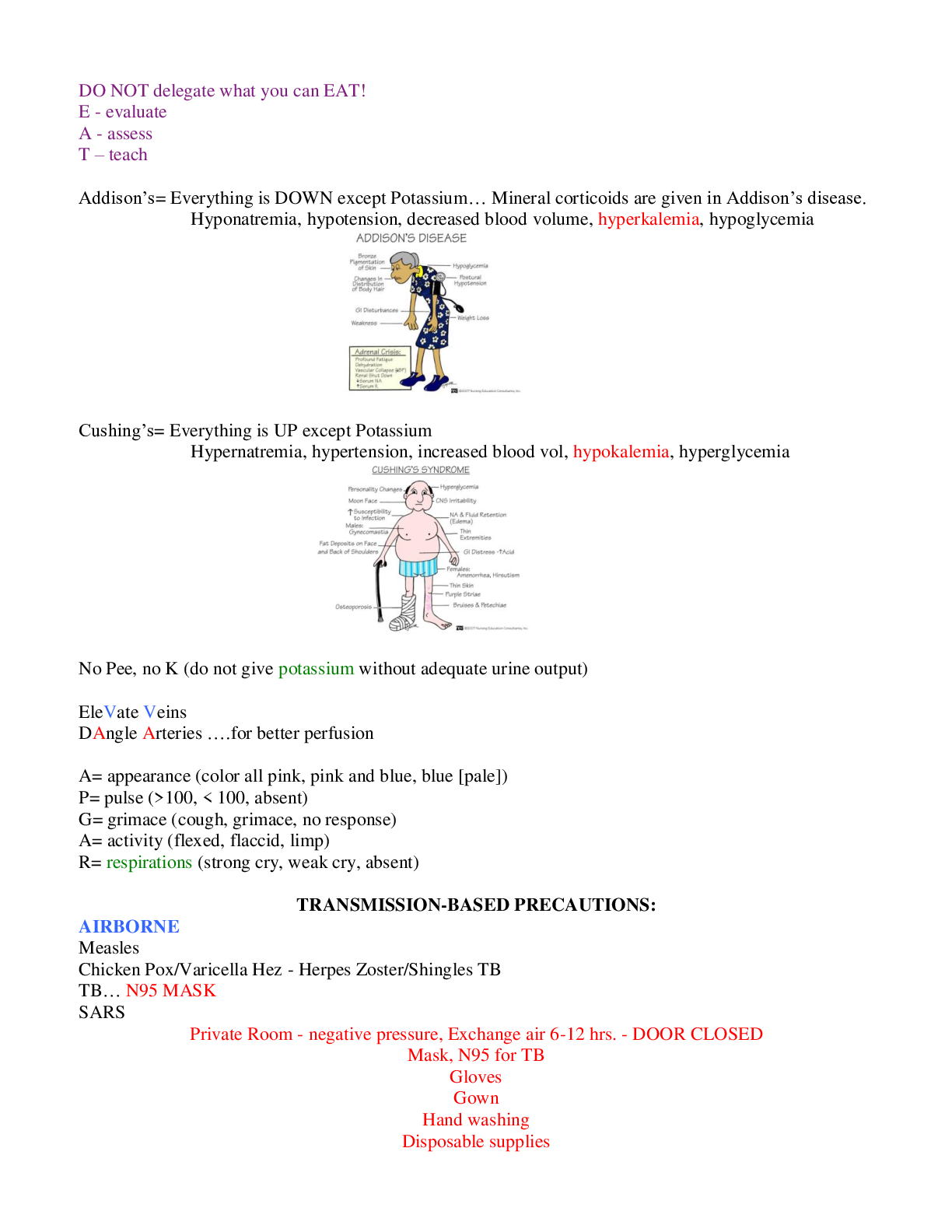
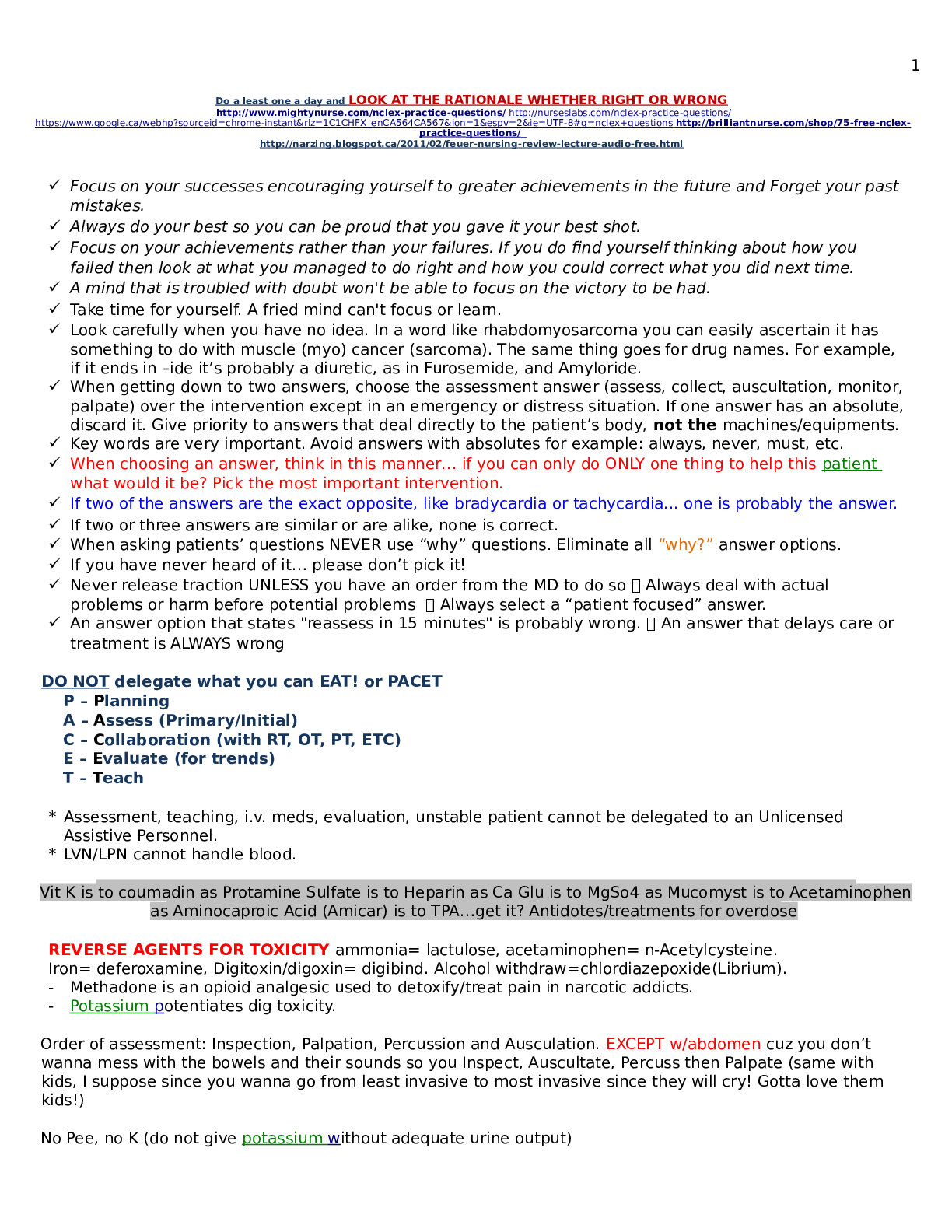

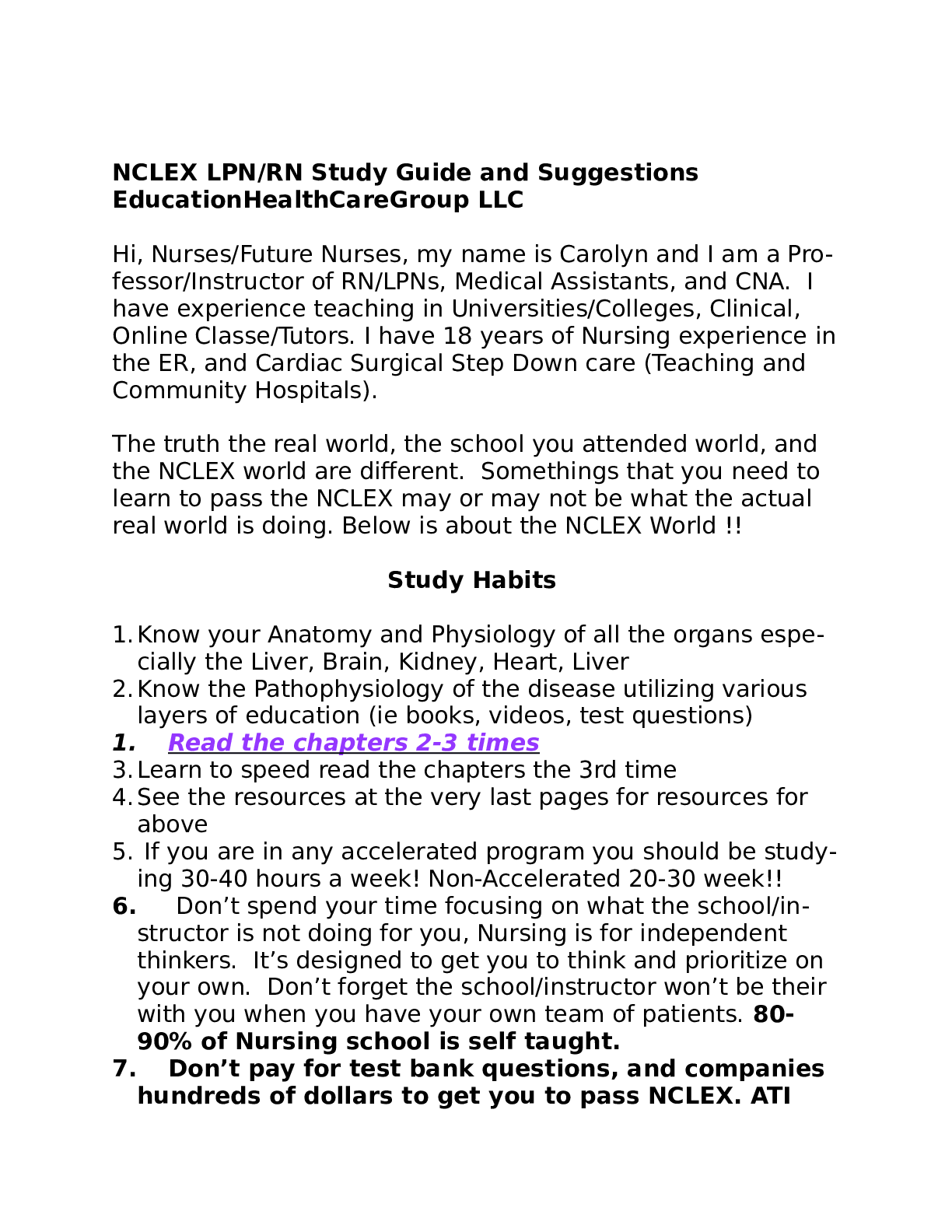
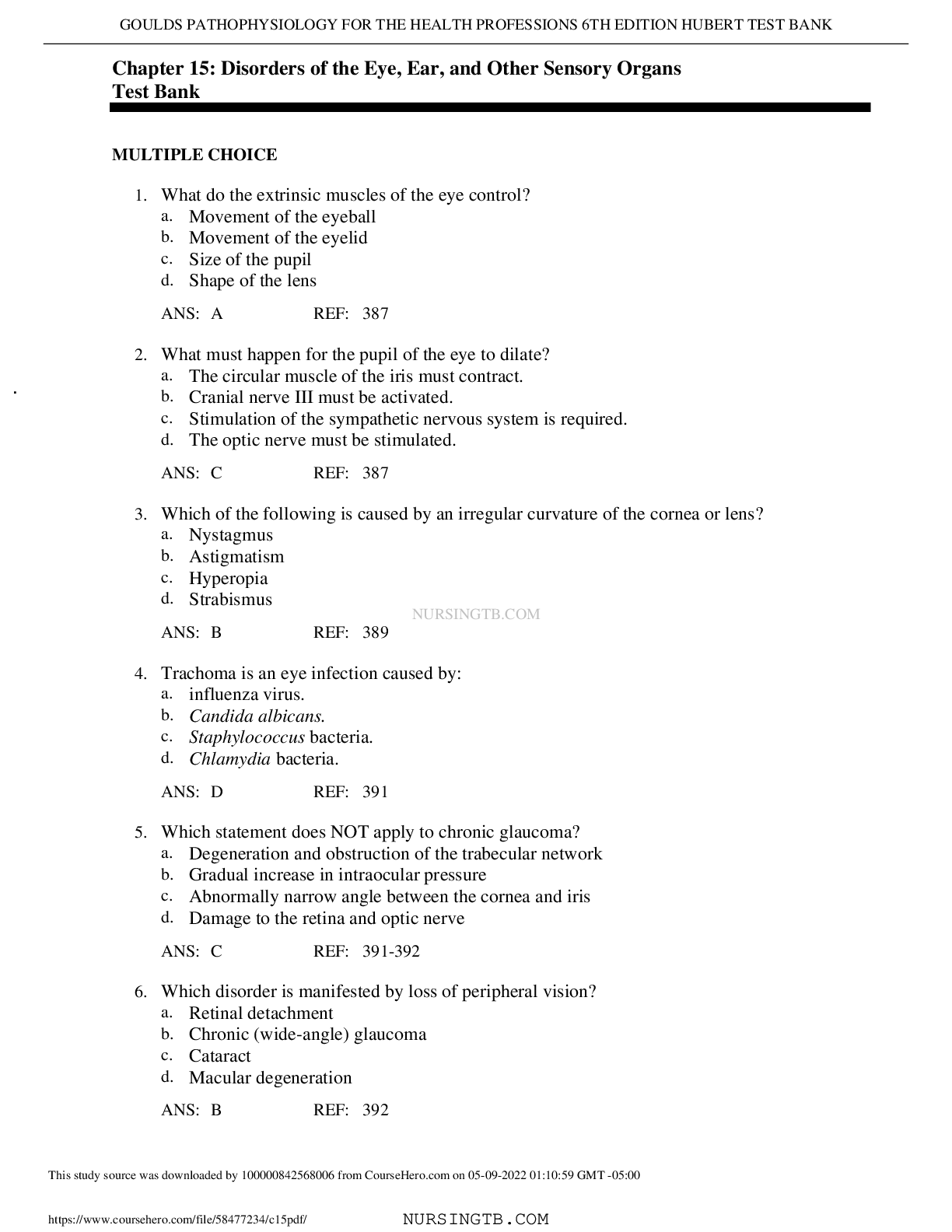
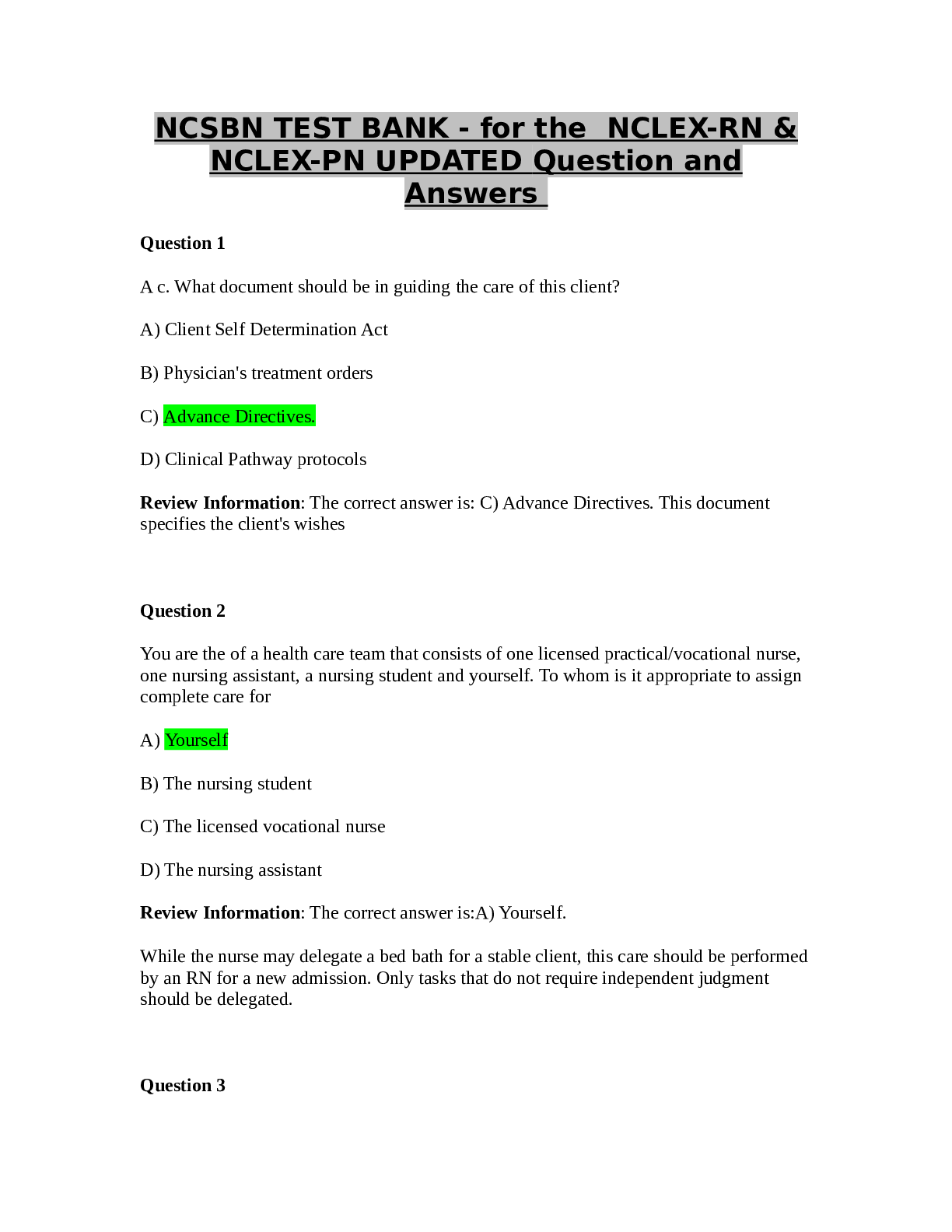

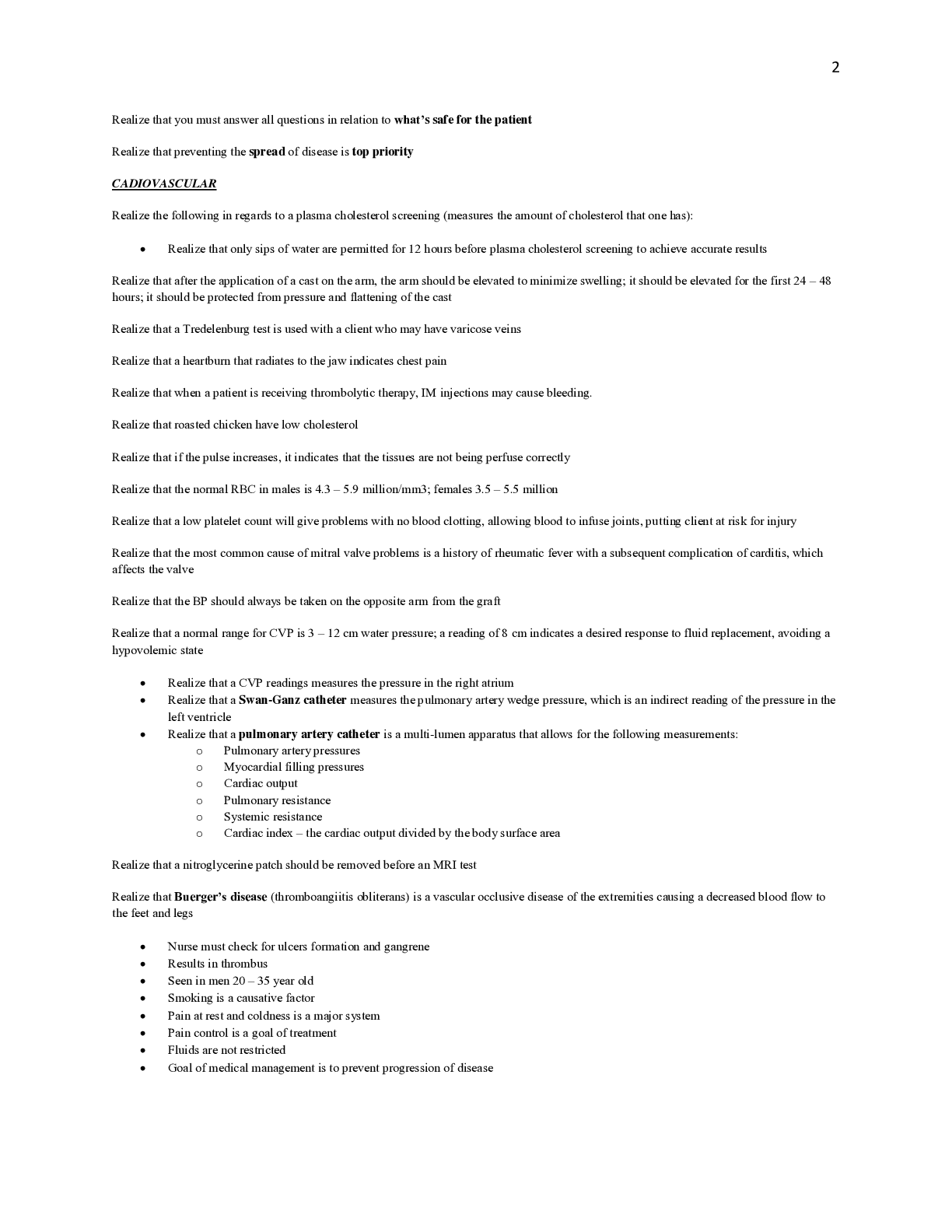
 (1).png)

